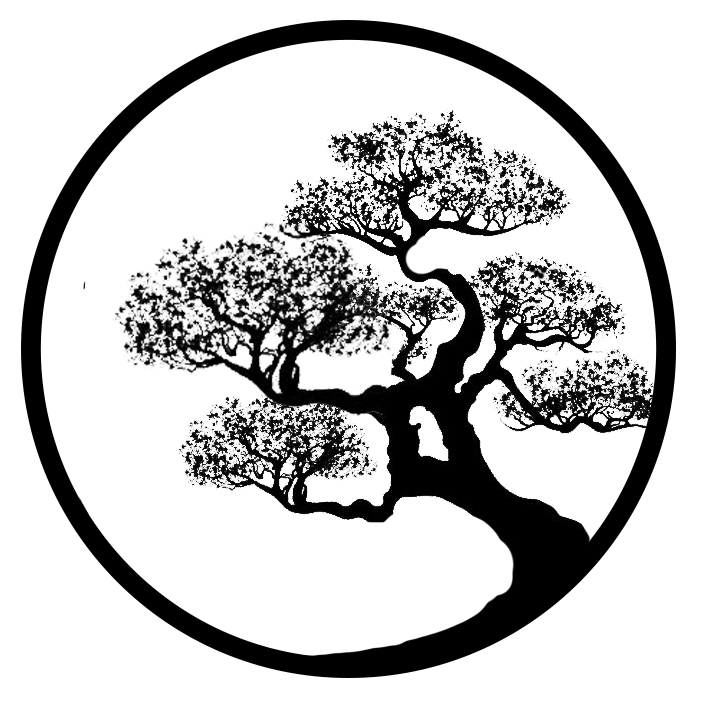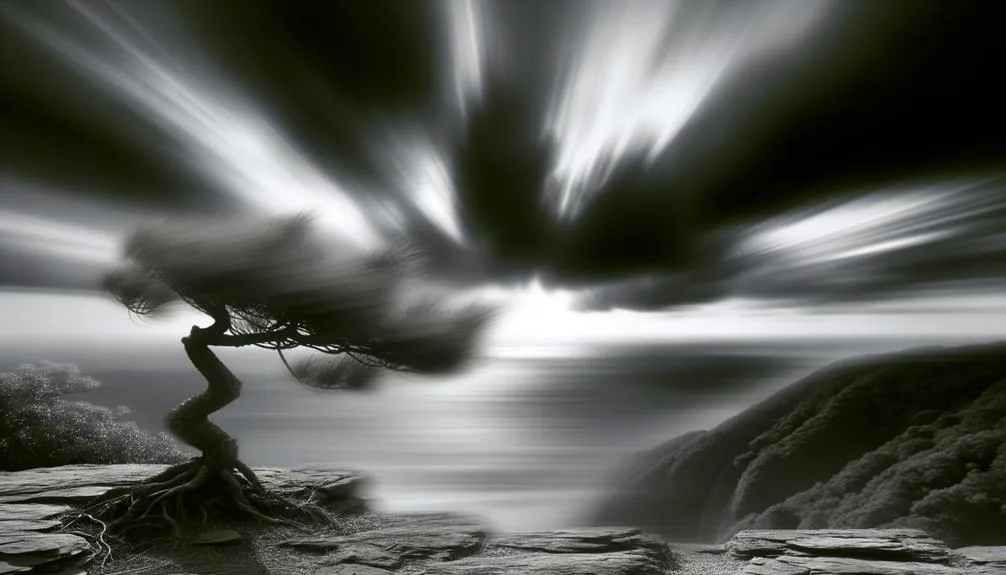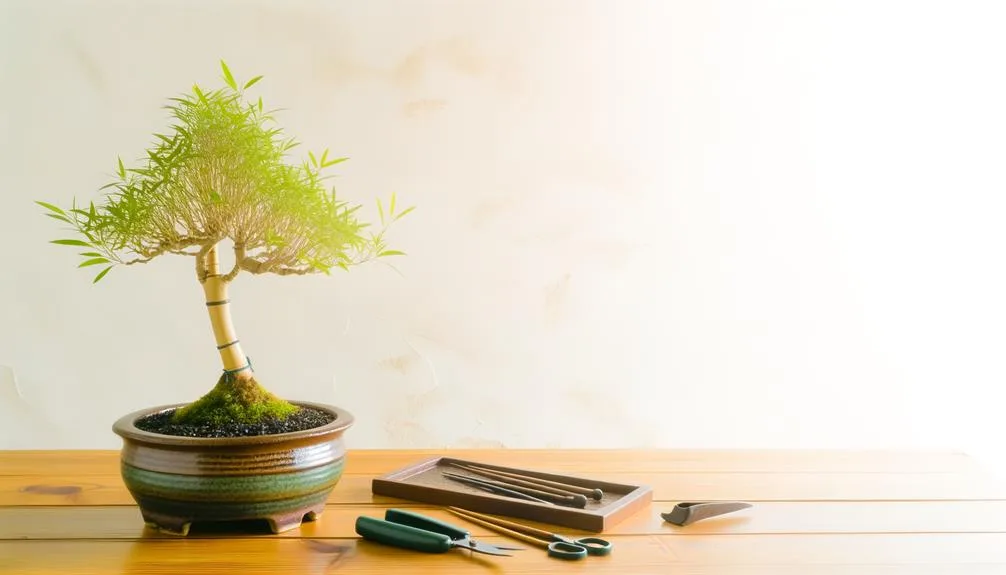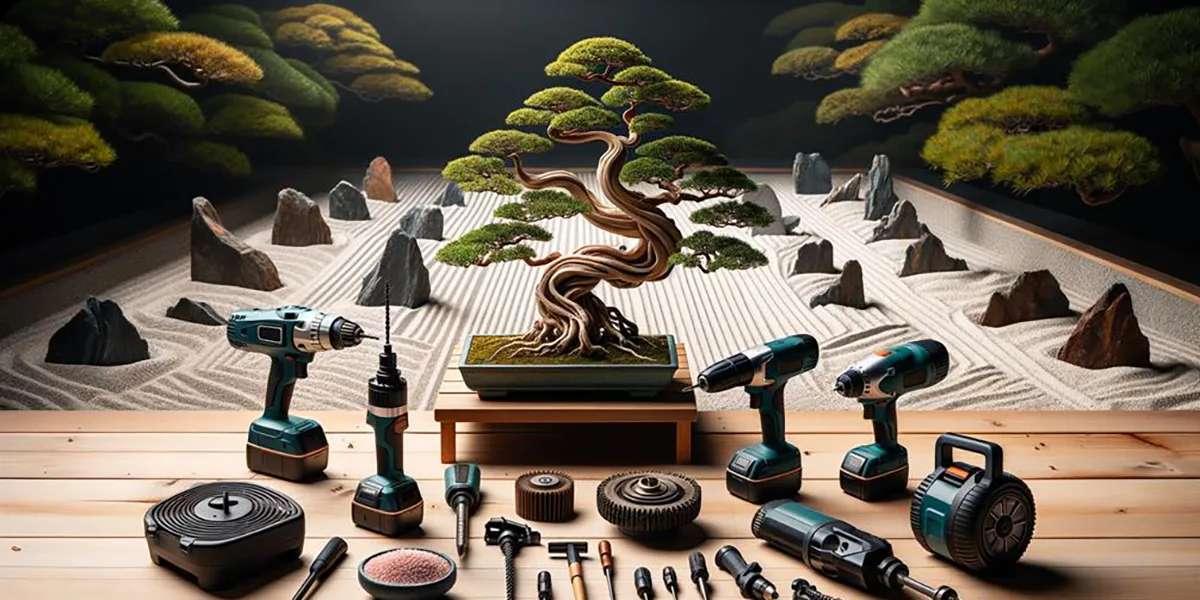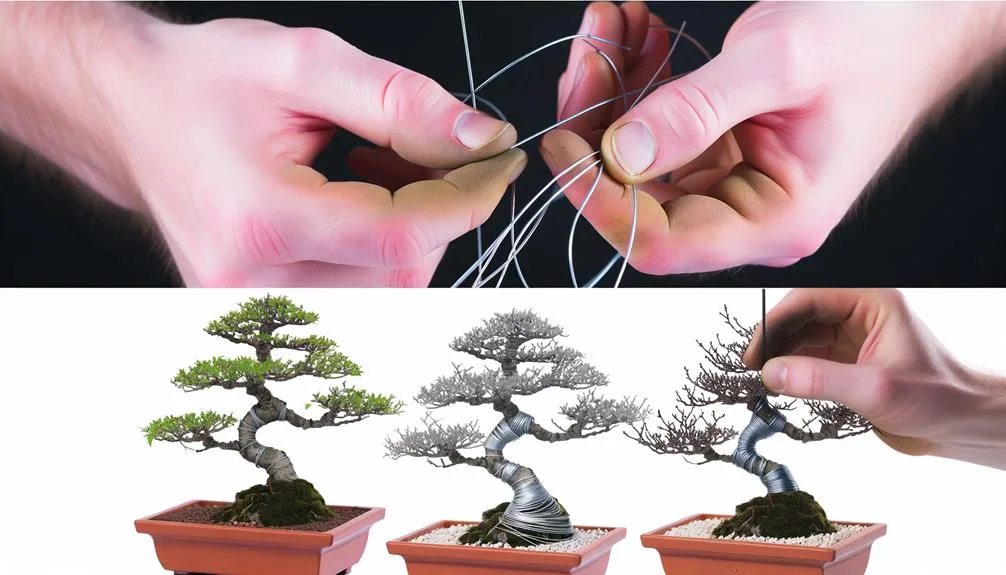The Windswept Bonsai Tree style, also known as Fukinagashi in Japanese, is a captivating and evocative bonsai design that seeks to capture the visual drama of a tree enduring strong and persistent winds. This style conveys the impression of a tree struggling against prevailing forces, with its branches and foliage bending in one dominant direction, as if shaped by the relentless power of the wind.
These tiny creations, despite their size, mirror the formidable strength of nature, their branches extending as though shaped by the most violent winds.
For me, nurturing these miniature trees goes beyond a simple hobby. They stand as an embodiment of patience, care, and artistic vision. But what is it that makes them so dramatically appealing? What is it about them that so thoroughly captivates me?
Let’s dive into the fascinating world of these intriguing, windswept wonders together.
Key Takeaways
- Windswept bonsai originated in Japan and represents an exceptional form of artistic expression.
- Different styles of windswept bonsai symbolize resilience, power, and perseverance.
- Shaping windswept bonsai trees requires meticulous wiring and pruning techniques.
- Windswept bonsai trees represent resilience, endurance, and the harmony between humans and nature.
Origins of Windswept Bonsai
The Windswept Bonsai, with its roots traced back to Japan, represents an exceptional form of artistic expression that draws inspiration from the tenacity and form of trees existing in dry, wind-battered ecosystems. It evolved from the practice of bonsai, encapsulating the raw allure of nature in a compact form. The history of the windswept bonsai, a style deeply embedded in Japanese tradition, is indeed an interesting subject.
The Windswept Bonsai manifests in different forms, each exhibiting the impact of wind on trees. Styles like the Moyogi-style and Fukinagashi-style depict diverse aspects of the windswept appearance. These styles personify resilience, power, and perseverance, resonating with the Japanese concept of wabi-sabi. They’re a representation of human resilience and determination.
Distinctive traits of a windswept bonsai comprise a tilted trunk, contorted branches, and deeply etched bark, reflecting the impacts of fierce winds. The practice of bonsai calls for meticulous selection of tree and design methods. You’ll also need to manage its hydration, nutrition, trimming, and wiring, while monitoring sunlight, temperature, and humidity conditions. The origins of the windswept bonsai pay homage to the power of nature and the adaptability of the bonsai art form.
Understanding Bonsai Styles
In your journey through the art of bonsai, it’s vital to grasp that each bonsai style, be it formal upright, informal upright, slanting, windswept, or weeping, embodies distinct traits and symbolizes various facets of nature. These bonsai styles act as nature’s signatures, each narrating its own tale.
The windswept style, as an illustration, represents resilience and endurance. This is actualized by choosing a tree with a straight trunk, then utilizing wiring to fabricate the illusion of wind. Curves and twists in branches are accentuated, illustrating a tree that’s weathered numerous storms. Regular care and upkeep are fundamental. Regular watering, fertilizing, pruning, checking and adjusting wiring, and ensuring adequate sunlight and temperature, are all part of the process.
Next, we’ve the weeping style. It’s a rare sight in bonsai, making it more difficult to achieve compared to the windswept style. Grasping these styles is a crucial component of learning about bonsai styles.
The Windswept Bonsai Aesthetic
The Windswept Bonsai Aesthetic
Venturing into the realm of bonsai, the windswept aesthetic is distinctive, encapsulating the spirit of trees formed by potent winds, particularly at coastal or mountainous sites. This aesthetic, with roots in Japan, mirrors the intense allure of nature’s power and the craftsmanship of bonsai.
The windswept bonsai trees boast unique characteristics: a leaning trunk, asymmetrical form, twisted branches, and deeply etched bark. These aren’t merely trees; they’re symbols of the persistent might of nature.
| Characteristic | Significance |
|---|---|
| Leaning Trunk | Struggle and endurance |
| Asymmetrical Shape | Flaws and uniqueness |
| Twisted Branches | Resilience and flexibility |
Styling these trees necessitates the meticulous wiring of branches to generate the impression of wind. However, shaping them isn’t all; their care is also important. Routine watering, fertilizing, and pruning are vital. Regularly inspect and adjust wiring to prevent harm, and ensure they receive sufficient sunlight and moderate temperature and humidity.
Becoming proficient in the windswept bonsai aesthetic calls for patience and commitment. But once it is accomplished, you’ll possess a living piece of art that encapsulates the striking allure of windswept bonsai trees.
Techniques for Shaping Bonsai
Understanding and appreciating the unique features of a windswept bonsai tree, one might want to cultivate this art themselves. The process of shaping bonsai is heavily dependent on two key techniques: wiring and pruning. The method of wiring branches allows the creator to mold desired forms and angles – a critical part of the process!
Maintaining the windswept shape necessitates frequent pruning. This not only helps to retain the tree’s shape, but also encourages healthy growth. A windswept bonsai’s branches should highlight curves and twists to depict movement, creating an impression of wind.
A crucial part of your bonsai’s care regimen is ensuring it receives a minimum of 6 hours of sunlight each day, and is kept in a moderate temperature and humidity environment.
Pines, junipers, and maples are suitable tree species for windswept bonsai trees. The frequency of watering is contingent on the type of tree, size of the pot, and the surrounding environmental conditions.
Armed with these simple bonsai shaping techniques, you’re equipped to craft your own windswept work of art. Bonsai is an art form, and like any art, it demands patience and practice. Enjoy your bonsai shaping experience!
Selecting Suitable Bonsai Trees
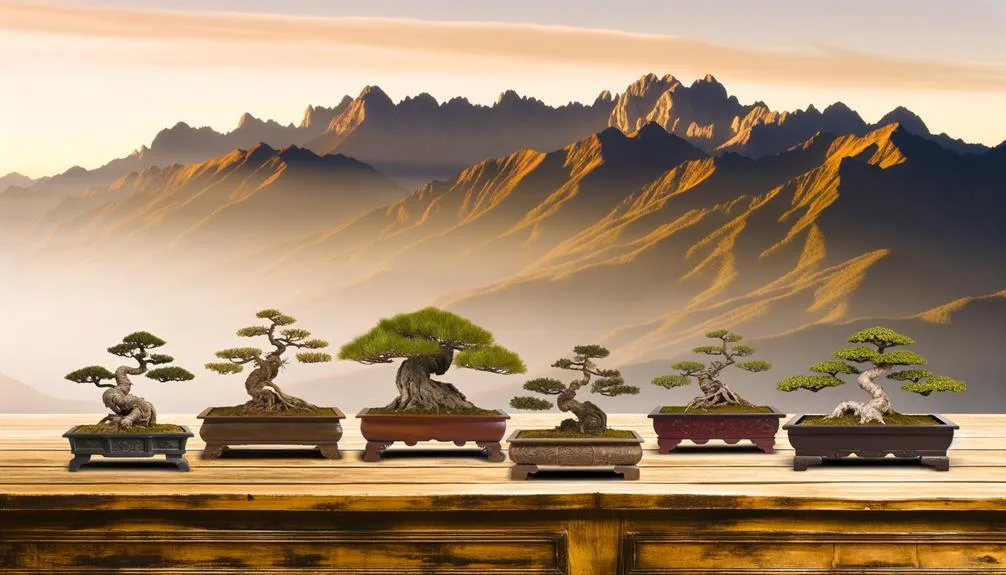
Choosing the correct tree for your windswept bonsai project necessitates thinking about its innate form, the metaphors it communicates, and the particular upkeep it needs. It’s vital to choose a tree that expands in response to severe environmental situations naturally.
When you’re prepared to choose your tree, think about these crucial details:
- Search for trees that flourish in seashore or hilly regions, shaped organically by the wind.
- Ponder the metaphors of the tree. A windswept bonsai signifies resilience, potency, and durability. It signifies the Japanese principle of wabi-sabi, appreciating beauty in flaws.
- The correct tree will exhibit a slanted trunk and asymmetrical branches, echoing the impacts of powerful winds.
- Guarantee that you can offer the required care. Consistent watering, balanced fertilizing, pruning, wiring, and sufficient sunlight are all important.
Lastly, think about the species. Pines, junipers, and maples are all fitting selections for a windswept bonsai.
Care and Maintenance Tips
Taking care of your windswept bonsai isn’t as hard as you might think.
You need to focus on proper pruning, watering, and feeding.
Let’s take a look at these essential techniques to keep your bonsai healthy and beautiful.
Bonsai Pruning Techniques
Proper trimming techniques are vital for the upkeep of your windswept bonsai. These techniques aid in preserving the tree’s wind-beaten look and promote the growth of branches in a preferred direction.
Below are five bonsai trimming techniques that should be a part of your bonsai maintenance routine:
- Selective Trimming: Eliminate unsightly or sickly branches to uphold aesthetics and tree health.
- Directional Trimming: Promote the growth of branches in a specific direction by cutting back to a bud facing that direction.
- Layering: Trim branches that reach skyward to maintain the horizontal windswept look.
- Thinning: Cut back the foliage to permit light and air to reach the inner branches.
- Root Trimming: During repotting, trim the roots to regulate the tree’s size.
Watering and Feeding Essentials
Maintaining appropriate moisture levels in your windswept bonsai is achieved by watering it regularly when the soil feels dry. This, coupled with feeding during the growth phase, forms the basis for watering and feeding. The use of balanced fertilizer aids in fostering robust growth and vitality.
The essentials are summarized in the table below:
| Care Steps | Description |
|---|---|
| Watering | Regularly, when soil is dry |
| Feeding | During the growing season |
| Fertilizer | Balanced, promotes healthy growth |
| Frequency | Regular, for vitality |
The Serenity of Bonsai Art
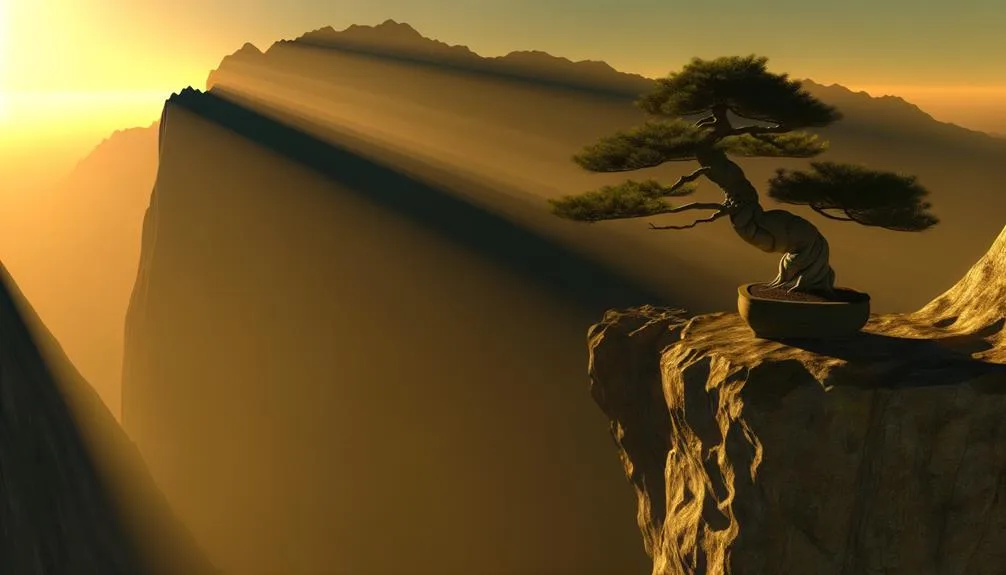
Experiencing the tranquility of bonsai art, you’ll observe how the windswept bonsai tree flawlessly encapsulates the serene harmony between humans and nature. It exceeds being merely a hobby; it’s a form of art that links you with the natural world and provides a feeling of calmness and peace.
Let’s examine the symbolism of windswept bonsai trees:
- Resilience and endurance: They withstand severe winds, yet persist in growing.
- Harmony: They symbolize the equilibrium between human and nature.
- Philosophy: They personify the Japanese concept of wabi-sabi, recognizing beauty in imperfection.
- Artistry: They display the art of bonsai in its most striking form.
- Tranquility: They stimulate a feeling of peace and serenity, contributing to your environment.
The tranquility of bonsai art allows you to appreciate a distinct demonstration of nature’s resilience and allure. Windswept bonsai trees, characterized by their bent trunks and branches, represent the power of nature and the artistry of bonsai. They stand as a testament to the enduring spirit of life.
Whether you’re new to bonsai or an experienced expert, the tranquility of bonsai art offers a peaceful haven in the hectic world of today.
Must-Visit Bonsai Exhibitions
For those passionate about bonsai, it’s highly recommended to check out the top-tier bonsai exhibitions that feature numerous windswept bonsai styles. These exhibitions present an extensive range of styles such as Moyogi, Fukinagashi, Han-Kengai, Ishitsuki, and Netsuranari. Each style magnifies the natural allure and resilience of these windswept bonsai trees.
At these exhibitions, you’ll see the expert methods employed to create movement in the bonsai trees and highlight their natural curves and twists. But it’s not solely about viewing. You can also gain knowledge on the care and maintenance of these windswept bonsai trees through practical workshops. These sessions will instruct you on everything from watering and fertilizing to pruning and wiring.
These top-tier bonsai exhibitions also offer a chance to comprehend the symbolism of windswept bonsai. These trees symbolize strength, endurance, impermanence, and unity with nature. It’s a rare chance to appreciate not just the visual appeal, but also the cultural importance and worldwide popularity of these windswept bonsai trees.
Consequently, whether you’re a beginner or an expert bonsai lover, these exhibitions are highly recommended.
Frequently Asked Questions
What Is the Appeal of Bonsai Trees?
You’re drawn to bonsai trees for their unique aesthetics, cultural significance, and therapeutic benefits. They embody resilience and endurance, offering a captivating blend of art, nature, and philosophy that’s not just beautiful, but also soothing.
What Is Windswept Style of Bonsai?
Windswept style of bonsai, you’re mimicking trees shaped by strong winds, using specific styling techniques. It’s aesthetically significant, symbolizing resilience and strength, and culturally impactful, reflecting the Japanese philosophy of harmony with nature.
What Is Windswept Bonsai?
You’re crafting a windswept bonsai, a process that reflects nature’s impact on trees. It’s challenging, requiring careful maintenance, yet the environmental influence gives it a unique appeal. It’s hard work, but it’s worth it.
What’s so Special About Bonsai Trees?
You’ll find bonsai trees special due to their rich history, symbolic nature, and intricate maintenance. They represent resilience, strength, and harmony, while their care involves a balanced mix of watering, pruning, and sun exposure.
